Indian Star Tortoise For Sale
$2,499.99
WE HAVE INDIAN STAR TORTOISE FOR SALE. HERE ARE SOME HIGHLIGHTS:
- Geochelone elegans
- Captive Bred
- Male
- Approximately 6 Inches In Shell Length
- Adults Can Grow Up To 5 – 8 Inches In Shell Length
- Feeding On A Variety Of Vitamin Dusted Greens And Vegetables
FUN FACTS!!
- Beautiful Intricate Shell Pattern On This Rare Species
- Smaller Tortoise Perfect For An Indoor Enclosure
- Originating Out Of India These Tortoises Are Used To The Savannah Grasslands And Forests Of The Area
- With Proper Care These Tortoises Can Live 30 – 50+ Years In Captivity
- Be Sure To Provide Plenty Of Heat, UVB And A One To Two Inch Deep Water Dish
Indian Star Tortoise
The Indian Star Tortoise (Geochelone elegans) is a fascinating reptile species known for its strikingly beautiful star-patterned shell. Native to the dry, scrubby forests and grasslands of India, Pakistan, and Sri Lanka, this tortoise has adapted well to a variety of habitats. The unique star-shaped patterns on its carapace not only provide an element of visual appeal but also serve as a form of camouflage, helping it blend seamlessly into its natural environment. This evolutionary trait is crucial for avoiding predators.
Geographically, the Indian Star Tortoise is primarily found in the Indian subcontinent, ranging from the open woodlands of India’s southern states to the arid regions of Rajasthan and Gujarat. The species has also been observed in the southeastern parts of Pakistan and across the natural landscapes of Sri Lanka. The distribution of this tortoise is closely linked to its preference for a warmer climate, making these regions ideal for its survival and reproduction.
One of the defining features of the Indian Star Tortoise is its intricately designed shell, which exhibits a series of radiating yellow or orange lines that resemble a starburst against a dark background. This distinctive pattern is not just for show; it plays a crucial role in the tortoise’s ability to navigate and survive in its habitat. The shell’s structure provides protection and aids in thermoregulation, allowing the tortoise to endure extreme temperatures.
Beyond its natural allure, the Indian Star Tortoise holds significant cultural importance in India. In Hindu mythology, the tortoise is considered a symbol of longevity, stability, and perseverance. This cultural reverence has contributed to its popularity as a pet, both within India and internationally. However, this popularity has also led to its exploitation, making the species vulnerable to illegal wildlife trade and habitat loss. Conservation efforts are essential to ensure the survival of this remarkable species for future generations to appreciate and admire.
Physical Characteristics
The Indian Star Tortoise, scientifically known as Geochelone elegans, is renowned for its visually striking star-patterned shell. This shell, known as a carapace, features yellow or orange radiating lines that contrast vividly against a dark brown or black background. These intricate patterns not only contribute to the tortoise’s aesthetic appeal but also provide a form of camouflage in its native arid environments.
In terms of body size, the Indian Star Tortoise exhibits moderate dimensions. Adult males typically measure between 6 to 8 inches in length, while females tend to be larger, ranging from 8 to 10 inches. This difference in size is a key aspect of sexual dimorphism within the species. Males can also be identified by their concave plastron, which facilitates mating, whereas females possess a flatter plastron. Additionally, males have longer, thicker tails compared to their female counterparts.
Another notable feature of the Indian Star Tortoise is its coloration. Beyond the carapace, the tortoise’s skin is generally a muted, earthy tone, which helps it blend into its natural habitat. The limbs and head are covered with rough scales, providing protection from predators and environmental elements. The eyes of the tortoise are often dark and reflective, situated on a head that is proportionally small in comparison to its body.
The lifespan of an Indian Star Tortoise is another point of interest. In the wild, these tortoises can live up to 30 to 40 years, while those in captivity, given optimal care, may reach up to 50 years. Growth patterns of the species are influenced by various factors including diet, environment, and overall health. Juvenile tortoises grow relatively quickly, but as they reach maturity, their growth rate diminishes, and they settle into a steady size and weight.
Understanding these physical characteristics provides insight into the adaptability and survival strategies of the Indian Star Tortoise, making it a fascinating subject for both herpetologists and enthusiasts alike.
Natural Habitat and Distribution
The Indian Star Tortoise (Geochelone elegans) is primarily found in the diverse landscapes of India, Pakistan, and Sri Lanka. These regions offer a variety of natural habitats that are conducive to the tortoise’s survival, including grasslands, scrub forests, and semi-arid zones. Each of these environments provides the essential conditions necessary for their thriving existence.
Within the grasslands, the Indian Star Tortoise benefits from a mix of open spaces and scattered vegetation, which offers both foraging opportunities and shelter. Scrub forests, characterized by dense shrubs and small trees, provide ample cover from predators and extreme weather conditions. The semi-arid regions, with their sparse vegetation and rocky outcrops, are particularly suited to the tortoise’s needs, offering a combination of sunlit areas for basking and shaded spots for cooling down.
Temperature plays a crucial role in the well-being of the Indian Star Tortoise. These reptiles are ectothermic, relying on external sources to regulate their body temperature. They thrive in environments where daytime temperatures range from 30°C to 35°C (86°F to 95°F), with a notable drop during the night. Humidity levels, too, are significant, with these tortoises preferring moderate humidity to avoid dehydration and respiratory issues.
Vegetation in these habitats varies but generally includes grasses, leafy plants, and occasional fruit-bearing shrubs. Such a diet is vital for their nutritional needs, aiding in shell development and overall health. Additionally, water sources, though not abundant in semi-arid zones, are crucial for drinking and soaking.
Regarding distribution, the Indian Star Tortoise is quite adaptable, with populations spread across the plains of Gujarat, the forests of Tamil Nadu, and the coastal areas of Sri Lanka. Seasonal migrations, although limited, do occur, mainly driven by the search for food and optimal breeding sites. During the monsoon season, some tortoises may move to higher grounds to avoid flooding, while others might seek out newly abundant food sources.
Diet and Feeding Habits
The Indian Star Tortoise, known for its distinctive star-patterned shell, follows a predominantly herbivorous diet. In the wild, these tortoises have a varied diet that primarily consists of grasses, leafy plants, and succulents. They are known to forage for fibrous vegetation, which provides essential nutrients and aids their digestive systems. Some commonly consumed plants include dandelions, clover, and various types of grass, which form the bulk of their diet in their natural habitat.
In addition to grasses and leafy greens, the Indian Star Tortoise occasionally consumes fruits and flowers. These additions to their diet are not only a source of essential vitamins and minerals but also add variety to their intake. Fruits such as melons, berries, and papayas can be found in their diet, though they are consumed in smaller quantities compared to greens. Flowers like hibiscus and roses are also relished by these tortoises, providing both nutrition and a treat.
When kept as pets, it is crucial to replicate the natural diet of the Indian Star Tortoise as closely as possible to ensure their health and longevity. Owners should provide a balanced diet rich in high-fiber, low-protein foods. Leafy greens such as collard greens, mustard greens, and kale should form the core of their diet. It is also beneficial to include a variety of vegetables like squash, carrots, and bell peppers to offer a range of nutrients.
Supplementing their diet with occasional fruits can be advantageous, but it should be done sparingly to avoid excessive sugar intake. It is essential to provide clean, pesticide-free food and ensure that the diet is well-rounded and diverse. Additionally, calcium supplements may be necessary to support shell and bone health, especially in captivity where natural foraging is limited.
Overall, understanding and meeting the dietary needs of the Indian Star Tortoise is paramount for their well-being. By mimicking their natural diet and ensuring a balanced intake of nutrients, both wild and captive tortoises can thrive and maintain optimal health.
Behavior and Social Structure
The Indian Star Tortoise exhibits a range of behavioral patterns that reveal much about its unique lifestyle. These tortoises are primarily diurnal, meaning they are active during the day. Daily activities include foraging for food, which mainly consists of grasses, fruits, and flowers. Basking is another significant part of their daily routine. Indian Star Tortoises often spend hours under the sun to regulate their body temperature, which is crucial for their metabolic processes.
Social interactions among Indian Star Tortoises are relatively limited. They are generally solitary creatures, coming together primarily during the mating season. During these periods, males may exhibit competitive behaviors, such as head-butting, to win the favor of a female. Once mating is successful, the female will seek out a suitable nesting site. Typically, these nesting sites are shallow burrows dug into the ground where she will lay her eggs. The incubation period for the eggs is approximately 90 to 120 days, depending on environmental conditions.
In terms of mating behaviors, males often exhibit a series of courtship rituals, which may include circling the female and making vocalizations. Once the eggs are laid, the female covers them with soil to protect them from predators and environmental conditions. It is also worth noting that the sex of the hatchlings is temperature-dependent; higher incubation temperatures generally produce females, while cooler temperatures yield males.
There are notable differences in behavior between Indian Star Tortoises in the wild and those in captivity. In the wild, these tortoises exhibit more extensive roaming and foraging behaviors due to the necessity of searching for food. In captivity, however, their movements are restricted, which can lead to different activity patterns. Additionally, captive tortoises may exhibit more frequent basking due to the controlled environments they are kept in. Understanding these behavioral distinctions is essential for providing proper care and ensuring the well-being of these unique reptiles.
Conservation Status and Threats
The Indian Star Tortoise (Geochelone elegans) is currently listed as “Vulnerable” by the International Union for Conservation of Nature (IUCN). This classification underscores the precarious situation the species faces due to a multitude of threats. Among these, habitat loss stands as a significant concern. The rapid expansion of agricultural activities and urban development has led to the fragmentation and degradation of the natural habitats that these tortoises rely on. The conversion of forests and grasslands into farmlands has drastically reduced the available living space for the Indian Star Tortoise, making it increasingly challenging for the species to thrive in the wild.
Poaching, driven by the illegal pet trade, represents another critical threat to the Indian Star Tortoise. The distinctive star-patterned shell of this tortoise makes it highly sought after in the international pet market. Despite legal protections, the demand remains robust, fueling illicit activities that further endanger the species. Poachers often capture these tortoises in large numbers, significantly impacting their populations. Additionally, cultural beliefs and traditional practices in some regions also contribute to the poaching problem.
Conservation efforts to protect the Indian Star Tortoise are multifaceted. Legal protections under various national and international laws aim to curb poaching and illegal trade. For instance, the species is listed under Appendix I of the Convention on International Trade in Endangered Species of Wild Fauna and Flora (CITES), which prohibits international trade of the tortoises. Furthermore, numerous conservation programs focus on habitat restoration and management. These initiatives work to re-establish native vegetation and create protected areas where the tortoises can live without the threat of human encroachment.
Community involvement plays a vital role in these conservation efforts. Educating local populations about the importance of preserving the Indian Star Tortoise and encouraging sustainable practices can help mitigate some of the primary threats. By fostering a sense of stewardship, these educational programs aim to reduce poaching and habitat destruction, ensuring a safer environment for the species to flourish.
Caring for Indian Star Tortoises as Pets
Indian Star Tortoises are a popular choice among reptile enthusiasts due to their striking shell patterns and manageable size. However, they require specific care to thrive in captivity. Housing is a critical aspect; a spacious enclosure is necessary to provide ample room for movement. Outdoor enclosures are ideal if weather conditions permit, as they allow natural sunlight exposure. For indoor setups, a well-ventilated tortoise table or a large terrarium is recommended.
Substrate choice is essential for the well-being of Indian Star Tortoises. A mix of soil and sand can replicate their natural habitat, providing a comfortable and safe environment. Ensure the substrate is kept clean and dry to prevent bacterial growth and respiratory issues. Regular maintenance and spot cleaning can help maintain a healthy environment.
Temperature control is another crucial factor. Indian Star Tortoises are ectothermic and rely on external heat sources to regulate their body temperature. A temperature gradient should be established within the enclosure, with a basking area reaching around 95°F and a cooler area maintained at 75°F. Nighttime temperatures can drop slightly but should not fall below 70°F. Using ceramic heat emitters and thermostats can help achieve and maintain the desired temperatures.
Lighting is equally important. Ultraviolet (UVB) lighting is essential for the synthesis of Vitamin D3, which is vital for calcium metabolism and overall health. A UVB bulb should be positioned within 12 inches of the tortoise, and the light cycle should mimic natural daylight, approximately 12 hours on and 12 hours off.
Regular health check-ups are necessary to monitor for common health issues such as metabolic bone disease, respiratory infections, and parasitic infestations. Consulting a veterinarian with experience in reptile care is advisable for routine examinations and any medical concerns.
Ethical considerations and legalities are paramount when choosing to keep Indian Star Tortoises as pets. It is essential to ensure that the tortoise is obtained from a reputable source and not taken from the wild, as this can harm wild populations and is often illegal. Familiarizing oneself with local regulations and obtaining any necessary permits is crucial for responsible pet ownership.
Interesting Facts and Myths
The Indian Star Tortoise (Geochelone elegans) is a species that captivates attention not only for its striking appearance but also for the rich tapestry of facts and myths that surround it. This tortoise, native to India, Pakistan, and Sri Lanka, is well-known for the star-like patterns on its shell, which serve as a natural camouflage in the arid environments it inhabits.
One lesser-known fact about the Indian Star Tortoise is its remarkable longevity. These tortoises often live beyond 50 years in captivity, provided they are given proper care. Another intriguing aspect is their unique diet, which primarily consists of grasses and succulents, making them well-adapted to their dry habitats. Interestingly, they can go for extended periods without water, deriving moisture from their food.
Historically, the Indian Star Tortoise has been a subject of fascination and reverence. In various cultures within its native range, these tortoises are considered symbols of longevity and stability. In some Indian traditions, they are believed to bring good luck and prosperity when kept as pets. However, this belief has unfortunately fueled illegal trade, threatening their populations in the wild.
Myths about the Indian Star Tortoise also abound. One common myth is that they can predict weather changes. While there is no scientific evidence to support this, it is a testament to the tortoise’s perceived connection with nature. Another myth suggests that the intricate patterns on their shells have magical properties, capable of warding off evil spirits. Such beliefs, while unfounded, highlight the cultural significance of this species.
Understanding these facts and myths provides a holistic view of the Indian Star Tortoise, underscoring the need for conservation efforts to protect this fascinating species. By debunking myths and spreading awareness about their true nature, we can ensure that the Indian Star Tortoise continues to thrive both in the wild and in human care.
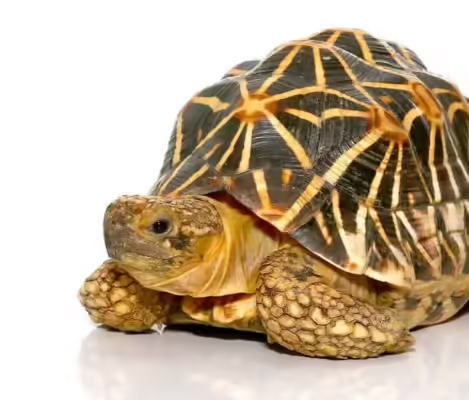


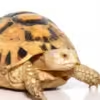














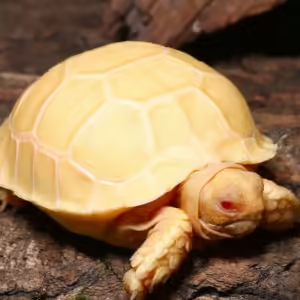
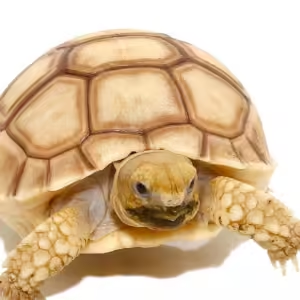
Reviews
There are no reviews yet.